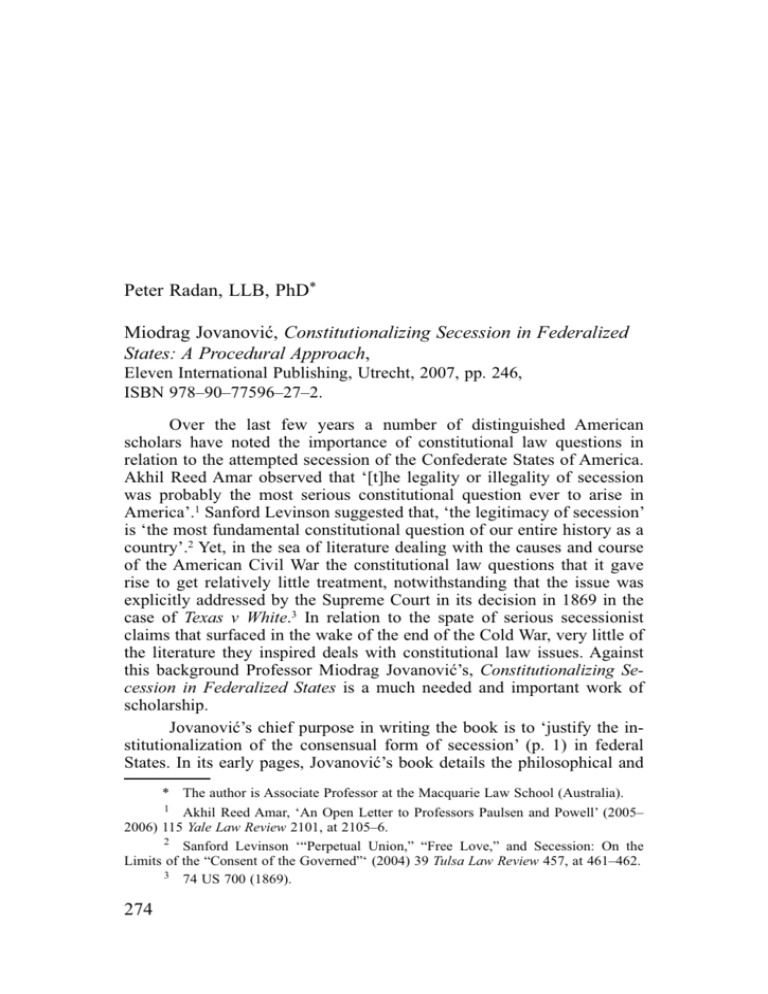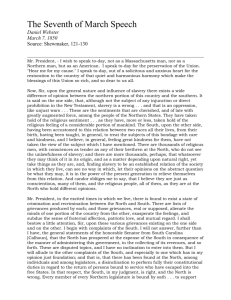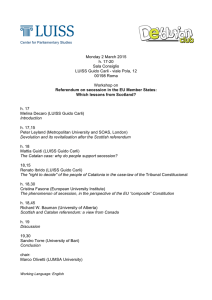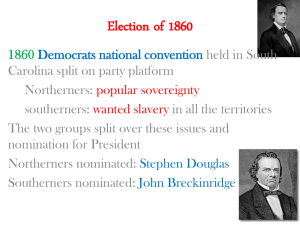274 Peter Radan, LLB, PhD Miodrag Jovanović, Constitutionalizing
advertisement

Peter Radan, LLB, PhD∗ Miodrag Jovanović, Constitutionalizing Secession in Federalized States: A Procedural Approach, Eleven International Publishing, Utrecht, 2007, pp. 246, ISBN 978–90–77596–27–2. Over the last few years a number of distinguished American scholars have noted the importance of constitutional law questions in relation to the attempted secession of the Confederate States of America. Akhil Reed Amar observed that ‘[t]he legality or illegality of secession was probably the most serious constitutional question ever to arise in America’.1 Sanford Levinson suggested that, ‘the legitimacy of secession’ is ‘the most fundamental constitutional question of our entire history as a country’.2 Yet, in the sea of literature dealing with the causes and course of the American Civil War the constitutional law questions that it gave rise to get relatively little treatment, notwithstanding that the issue was explicitly addressed by the Supreme Court in its decision in 1869 in the case of Texas v White.3 In relation to the spate of serious secessionist claims that surfaced in the wake of the end of the Cold War, very little of the literature they inspired deals with constitutional law issues. Against this background Professor Miodrag Jovanović’s, Constitutionalizing Secession in Federalized States is a much needed and important work of scholarship. Jovanović’s chief purpose in writing the book is to ‘justify the institutionalization of the consensual form of secession’ (p. 1) in federal States. In its early pages, Jovanović’s book details the philosophical and * The author is Associate Professor at the Macquarie Law School (Australia). 1 Akhil Reed Amar, ‘An Open Letter to Professors Paulsen and Powell’ (2005– 2006) 115 Yale Law Review 2101, at 2105–6. 2 Sanford Levinson ‘“Perpetual Union,” “Free Love,” and Secession: On the Limits of the “Consent of the Governed”‘ (2004) 39 Tulsa Law Review 457, at 461–462. 3 74 US 700 (1869). 274 Book Reviews (p. 266–284) theoretical debate over the question of whether or not federal constitutions should contain provisions regulating secession. One of the arguments in favour of constitutionalizing secession is that it will make secession and its often horrendous consequences less likely. Although Jovanović acknowledges that this argument partly motivated him to write his book (p. 197), he does not seek to ‘justify the institutionalization of the consensual form of secession’ by focusing on the debate over this question. Rather, Jovanović’s form of justification is through outlining and defending a procedural approach to secession. Such an approach focuses on the matters to be dealt with in a constitution’s secession clause, rather than whether or not such a clause should be included at all. This approach requires answers to a host of questions relating to the details that should be included in such a clause. Although history shows that few States in the past have had explicit secession clauses in their constitutions, Jovanović dutifully scours these cases in search of ‘good practice’ to be incorporated into his own model. An important preliminary issue to Jovanović’s study was his choice of a procedural, as opposed to a substantive, approach to secession. The latter approach is one that conditions secession upon some moral justification or claim such as ethnic, racial, religious or cultural rights. Jovanović rejects this approach. First, he points to the absence of adequate mechanisms to make the necessary adjudication on the threshold question of whether secession is justified – the ‘biased referee’ problem (p. 38). Second, he argues that, because the procedural approach he advocates is one based upon consent, moral justifications for secession are unnecessary, whereas the case for such justifications can be made in cases of unilateral secession (p. 40). In his advocacy of a procedural approach, Jovanović stands (almost) alone. Perhaps being a native of the Balkans and having lived through the secessions that were the break-up of Yugoslavia, with its absence of unbiased adjudicators and claims made by all sides to the various secessionist conflicts to being ‘the real victims’, contributed to Jovanović’s adoption of the procedural approach. The most important parts of Jovanović’s book relate to his analysis of the key practical questions that need to be addressed in a constitution’s secession clause. Perhaps the most important of these matters of detail relates to: Who decides and how? Jovanović sees a popular referendum as the preferred mechanism, as opposed to a decision by political elites. This requires, as Jovanović readily concedes, that the State be a true liberaldemocratic one (p. 5). Jovanović recognizes that there are problems with the referendum process, but argues that they can be met. The question of the territorial grouping of people or ‘electorate’ in which a secession referendum is to take place is one which Jovanović recognizes has its difficulties. He argues in favour of a series of referenda involving various 275 Annals – Belgrade Law Review 3/2008 different ‘electorates’ in order to determine the true extent and location of support for, and opposition to, secession, both within the relevant federal unit and in territory adjacent to it. This would enable future borderlines of the seceding unit to be drawn in such a way as to accommodate the wishes of the maximum number of people possible. The need for clarity in the wording of the referendum question and the nature of the majority required for the relevant referendum to ‘succeed’ are also thoroughly discussed by Jovanović. Although one may argue about the details of any one or more of the specific recommendations that Jovanović makes, one cannot fault him in terms of the thoroughness with which he has approached the task of considering the relevant literature and weighing up alternative recommendations. However, what is also clear from his study is that specific recommendations cannot be looked at in isolation. Thus, the suggestion that a simple majority vote would be sufficient for a referendum to succeed is conditioned upon there being, as already noted, a number of referenda. Jovanović’s book is a thoughtful, stimulating and provocative treatment of an important and contentious topic. It should be the first port of call for anybody interested in, or dealing with, the resolution of claims to secession. 276




